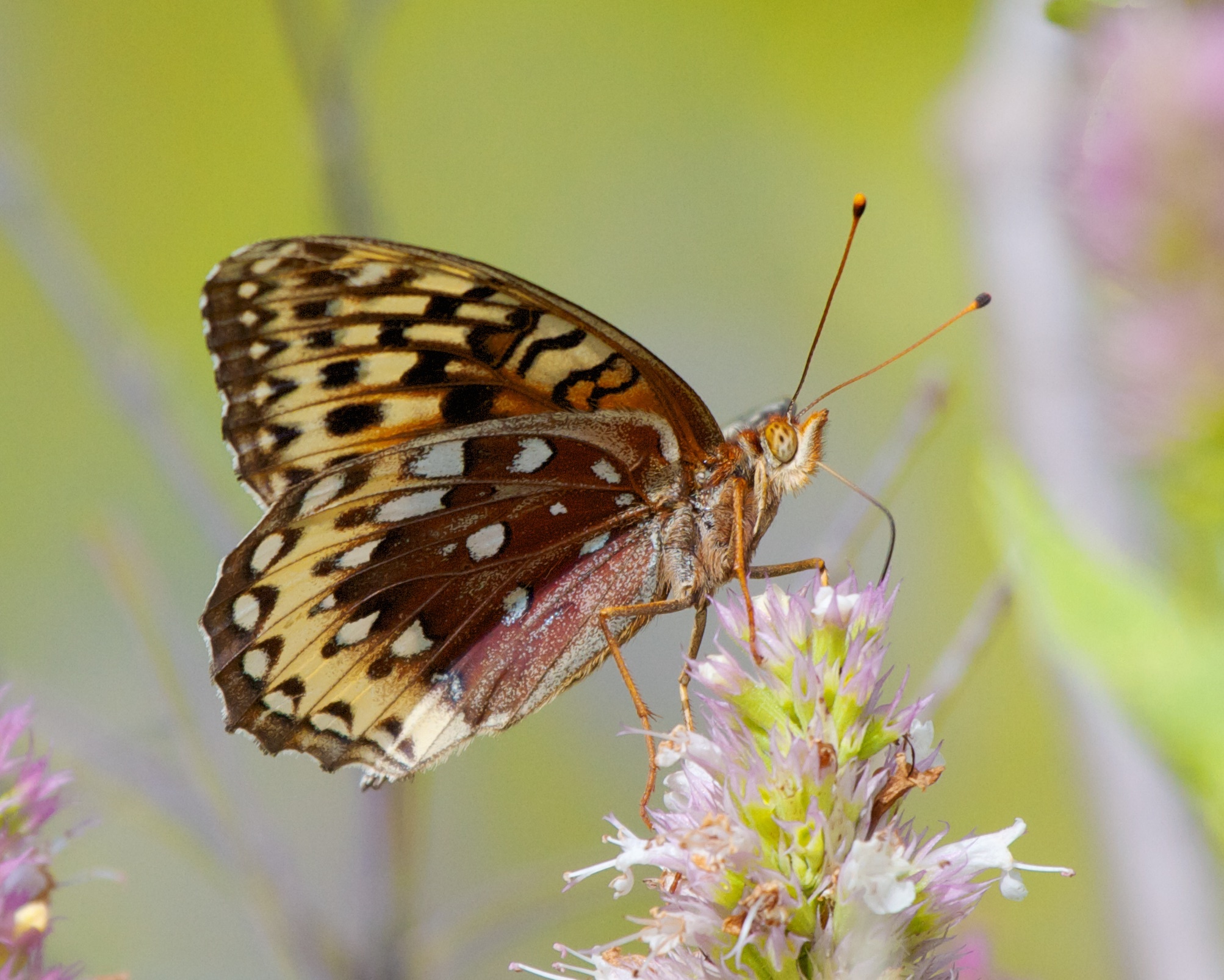By Jean Bjerke
Butterflies are amazing insects. The first thing we notice is probably their beautiful colors. They are delicate and fragile looking, but are tougher than most people imagine. Some butterflies like Monarchs (not found in Island Park) migrate thousands of miles between their winter range and summer range.

Other types of butterflies “overwinter” even as far north as Island Park. The Mourning Cloak is one of these. How would you like to stay outside with no clothes all winter? Adult Mourning Cloaks have an antifreeze-like chemical in their bodies and stay through the winter in a cavity in tree bark or under loose leaves. They emerge in spring, mate, and lay eggs, appearing as one of the first butterflies in spring. Mourning Cloaks are very pretty with dark brown wings with creamy beige edges and blue spots.
In my neighborhood in north Island Park, a summer walk in July provides many opportunities to see different kinds of fritillaries fluttering in the sunshine and feeding on flower nectar at various bushes and flowers. Fritillary butterflies have beautiful patterns of orange and black on their wings. The butterflies themselves do not overwinter like Mourning Cloaks, but their caterpillars overwinter.
Fritillary caterpillars hatch in the fall and immediately go to sleep without feeding! They sleep through the winter and continue their life cycle in the spring. Some scientists worry that the delicate coordination and timing of when the caterpillars awaken and when their food sources (certain flowers especially violets) are available may be affected by the changing climate. If the caterpillars awaken and there is no food for them, they will die.
There are about 30 different species of fritillaries and several are found in Island Park. One of the largest and best known is the Great Spangled Fritillary pictured here, photographed in Island Park.
